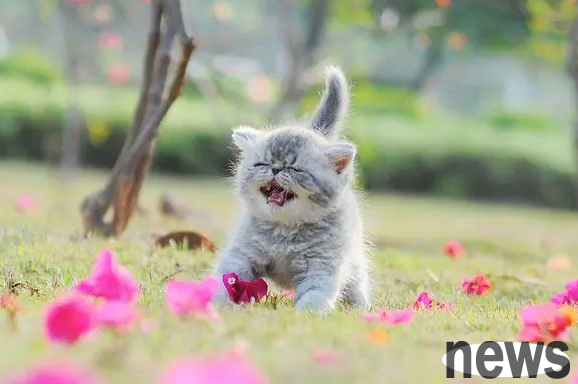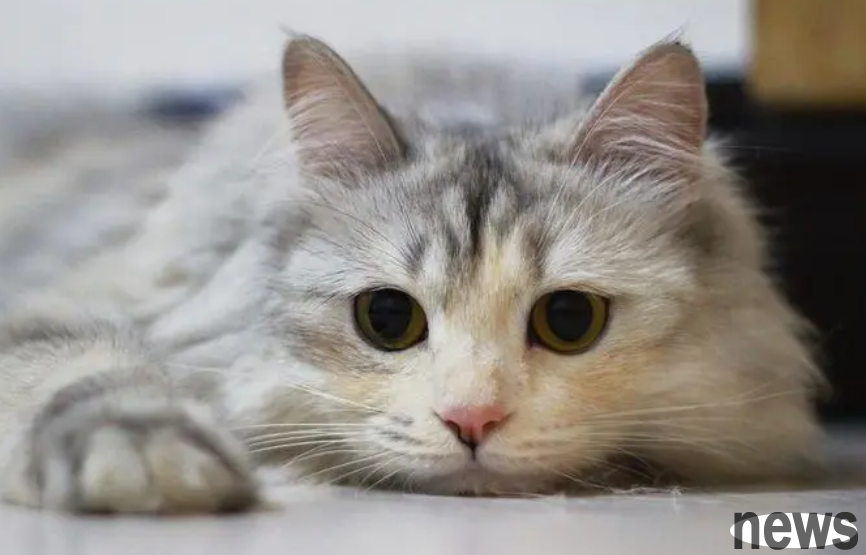Vitamin D is a general term for a type of ring-opentane polyhydrophenone ring derived from cyclopentane polyhydrophenone ring, which has anti-rickets properties. Vitamin D is mainly cholecalciferol (vitamin D3) and ergocalciferol (vitamin D2). Vitamin D3 is the product of dehydrocholesterol in animal skin after ultraviolet irradiation, collectively known as calcified alcohol.
Vitamin D is of great significance to cats. Studies have found that among pet cats who are hospitalized for treatment, if their vitamin D levels are higher, they will have a greater chance of recovery. Researchers at the Royal College of Veterinary Research, University of Edinburgh, UK, have discovered this phenomenon, and the research results also help veterinarians provide better advice to pet owners on pet prognosis issues.

researchers also tested blood samples from 99 pet cats who were being treated in the university's small animal hospital. After obtaining the owner's consent, the research team examined the vitamin D levels of the pet cats. They found that cats with higher vitamin D content in their blood were more likely to remain alive 30 days after admission than cats with the lowest levels of vitamin D. This could help veterinarians predict which animals are more likely to recover.
The researchers said the study highlighted the need to learn more about whether vitamin D has an effect on a cat's disease and what its effects on the cat's illness. So, letting your cat consume vitamin D scientifically can give it more life.
1. Clinical symptoms of vitamin D deficiency in cats
Young pets will experience symptoms of rickets, which are initially manifested as heterophilia, digestive disorder, limbs, slow growth and development, hypertrophy of cartilage, swollen limb joints, and bending limbs when standing. In severe cases, they will be in an "X" or "O" posture when standing; the bone hardness is significantly reduced, the brittleness is increased, and it is prone to fracture; the serum alkaline phosphatase activity is increased, and the blood calcium and blood phosphorus content is reduced. Adult pets are manifested as osteoporosis, osteoporosis, etc. In the early stage of the onset, digestive disorders mainly caused by heterophilia, followed by movement disorders, stiff waist and legs, lameness in single or several limbs, or alternating limbs in each limb, and often lying on the ground and unwilling to stand up. Then there will be swelling and deformation of the bones, swollen and painful limbs, swelling of the joints between the ribs and the rib cartilage, and easy to fracture. There was no significant change in serum calcium content, the serum phosphorus content was significantly reduced, and the serum alkaline phosphatase level was significantly increased.
2. Causes of vitamin D deficiency in cats
Long-term insufficient sun exposure can cause vitamin D deficiency; young pets grow and develop rapidly in the weaning stage and early sexual maturity, and calcium and phosphorus deposition is significantly increased; adult pets are prone to lose a large amount of calcium and phosphorus in the late pregnancy and lactation period. These factors can increase the body's need for vitamin D. If there is insufficient supply, it is easy to lead to deficiency; gastrointestinal diseases affect the absorption of vitamin D, liver diseases affect the conversion and storage of vitamin D in the liver, and kidney diseases can affect the hydroxylation of vitamin D. In addition, strontium and cymbals in the feed can interfere with the utilization of vitamin D. Excessive vitamin A content can also hinder the body's utilization of vitamin D, resulting in a relative deficiency.

3. Treatment of vitamin D deficiency
Vitamin D deficiency often reduces the body's absorption and storage of calcium. Moreover, due to the slow development of the disease, when typical symptoms appear, the cat's body not only lacks vitamin D, but also becomes loose due to the serious lack of calcium. Therefore, the treatment of vitamin D deficiency usually adopts a two-pronged approach that both vitamin D and calcium supplementation. In the early stage, you can use cod liver oil 5-10 mL and 2-3 g of calcium agent every day. After 5-6 days of continuous use, stop cod liver oil for 2-3 days, and continue to use until recovery: If the cat has severe bone deformation, it is necessary to intramuscularly inject vitamin D3 100,000 to 200,000 IU, intravenously inject calcium chloride or calcium gluconate 2-3 g, and then continue to treat using the above method. During the treatment process, you should closely observe the cat's feeding and digestive status. If digestive disorders occur, stomach-enhancing agents should be used as appropriate.
4. Pets need for vitamin D, poisoning symptoms and treatment
The minimum value of vitamin D requirements for pet cats during the growth period is 750 IU per kilogram of food dry matter, while the minimum value of adult maintenance period is 500 IU per kilogram of food dry matter, and the maximum value is 10,000 IU.
Vitamin D poisoning can occur if long-term supply of feed that exceeds the normal amount of vitamin D, or feeding pets with animal liver or cod liver oil for a long time. The main clinical manifestations of poisoning are anorexia and diarrhea, increased serum calcium concentration, normal or slightly increased serum phosphorus concentration, and bone decalcification; long-term high calcium can also cause multiple peripheral calcifications, such as kidney stones, osteoporosis, etc. The dietary structure is adjusted immediately after the poisoning is discovered. In addition to symptomatic treatment, injecting prednisolone can also be subcutaneously injected with fururosemum or calcitonin.